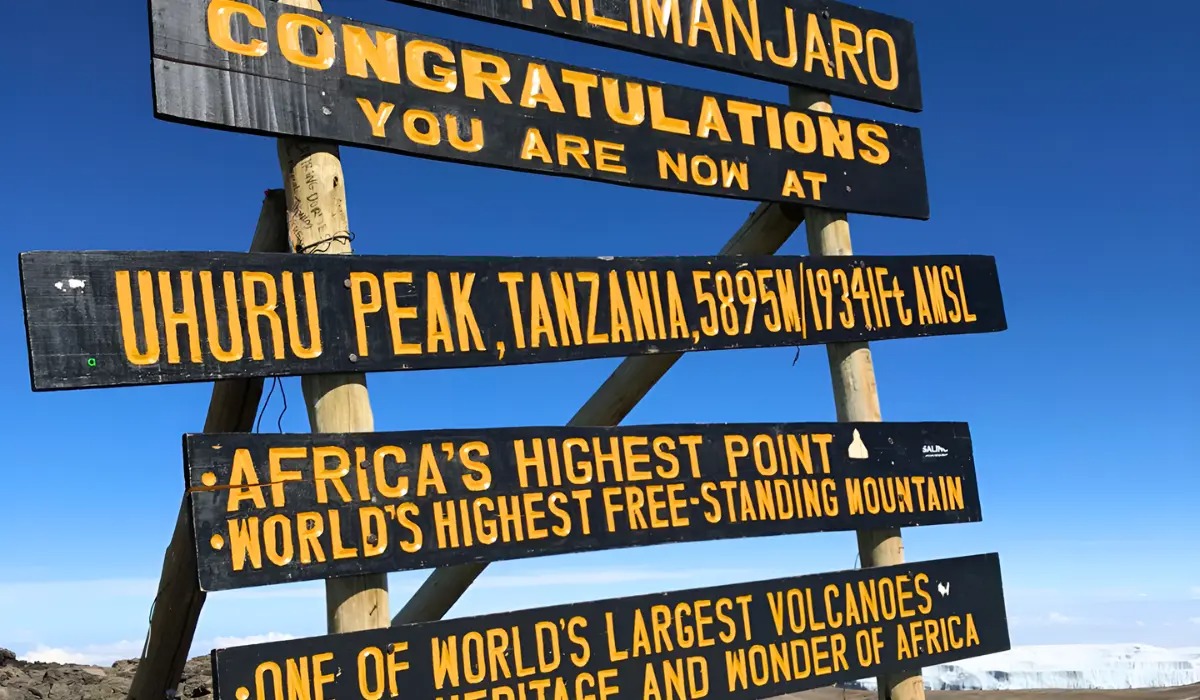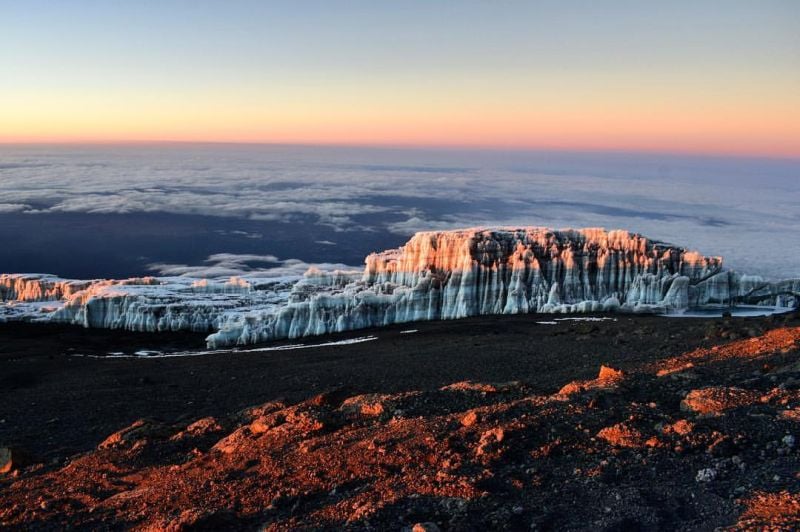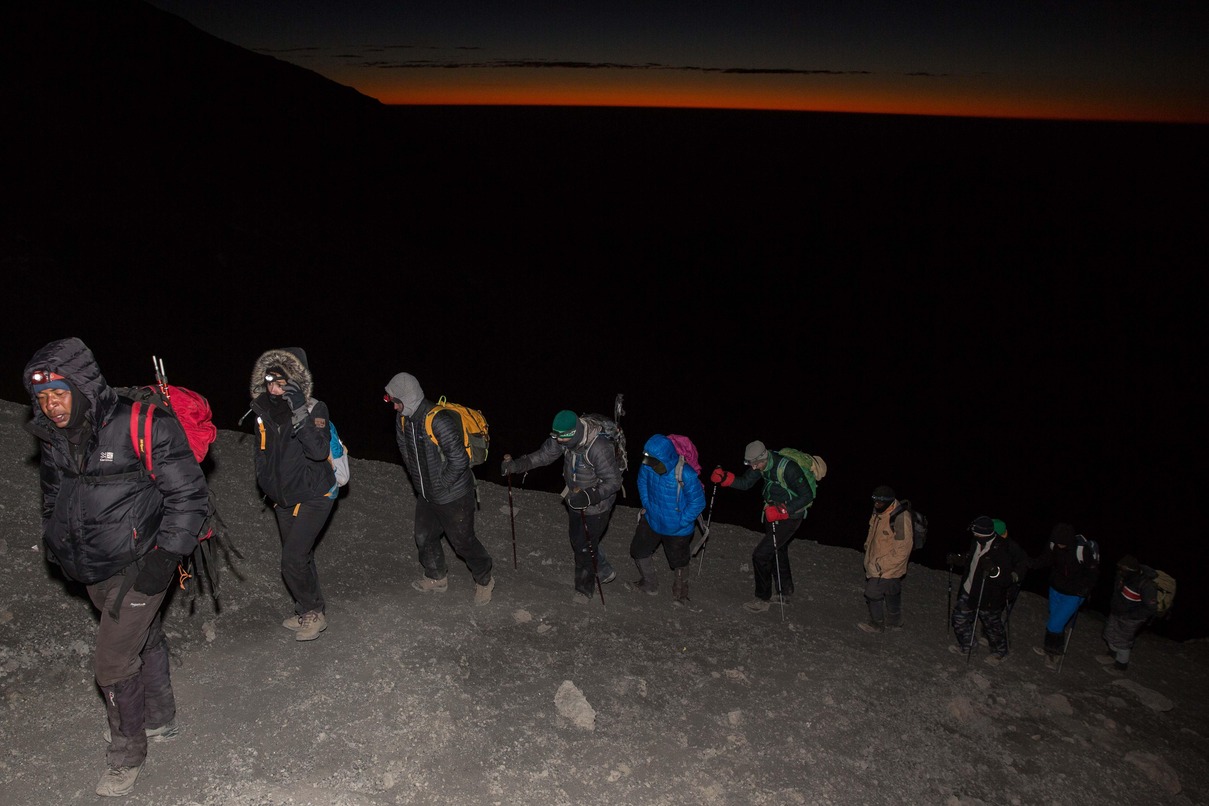Uhuru is a popular name all over Africa, not only because of this peak on Kilimanjaro, but in many countries, it carries a lot of pride. Uhuru is quite popular among revolutionists because it means freedom. Uhuru Kenyatta, the former president of Kenya having been born during independence,e was rightfully named Uhuru. After all “What’s in a name? That which we call a rose by any other name would smell just as sweet.” William Shakespeare is quoted in Romeo & Juliet. So why was Uhuru Peak named this way? For a long time, European countries ruled over many parts of Africa. This time is called the colonial period. During these years, Europeans did many things to show they were in charge of African lands and people. One way they did this was by changing the names of important places like mountains, rivers, and towns. They replaced African names with European ones to push their own culture onto the people living there. This made it seem like African history and traditions didn’t matter as much as European ones. It was a way to control not just the land, but also the identity of the people.
Mount Kilimanjaro is one of the most well-known mountains in the world. It stands as the tallest mountain in Africa and is found in a country called Tanzania. The Chagga people, a group who have lived near the mountain for hundreds of years, have always had a special connection to it. They speak their own language and have their own ways of life. To them, the top of Mount Kilimanjaro is called Kibo, a name that comes from their word for “spotted” because of the dark rocks that peek out from the snow. The Chagga also named another part of the mountain Mawenzi, which means “broken” because of its rough, jagged shape.
In the 1800s, Europeans started exploring Africa more and more. When they came across places like Mount Kilimanjaro, they often acted as if they were the first to find them, even though local people had known about these places forever. One of these explorers was a German man named Hans Meyer. In 1889, he climbed to the top of Mount Kilimanjaro. At that time, Germany was a big power in East Africa, controlling parts of what is now Tanzania. When Meyer reached the summit, he didn’t keep the Chagga name, Kibo. Instead, he planted a German flag and called it Kaiser Wilhelm Peak, after the German emperor. This wasn’t just a random choice—it was a sign to everyone that Germany now claimed this mountain and the land around it.
Changing the name was a big deal. It showed how European colonialists wanted to take over not just the physical places, but also the stories and meanings behind them. By giving the mountain a German name, they ignored the Chagga people’s history and made it seem like their culture didn’t count. This happened a lot during colonial times—local names were pushed aside or forgotten as Europeans tried to make Africa feel more like their own home.
But things changed in the 1900s. African countries, including Tanzania, began to stand up against European rule. They wanted to be free and to take back their lands and identities. Tanzania’s journey to freedom started with a place called Tanganyika, which was under British control after Germany lost World War I. In 1961, Tanganyika became independent, thanks to leaders like Julius Nyerere, who fought for the people’s rights. Then, in 1964, Tanganyika joined with the island of Zanzibar to become the United Republic of Tanzania. This was a new beginning, and the people wanted to celebrate it by bringing back their own names and pride.
One of the biggest changes they made was to the top of Mount Kilimanjaro. The name Kaiser Wilhelm Peak, tied to German rule, didn’t fit anymore. So, they renamed it Uhuru Peak. “Uhuru” is a Swahili word that means “freedom.” Swahili is a language spoken by many people in Tanzania and East Africa. This new name was a way to honor the hard work and sacrifices made to break free from colonial rule. It showed that Tanzania was now its own country, with its own voice and future.
The story of Uhuru Peak is more than just a name change. It’s about how people can reclaim what’s theirs after years of being controlled by others. It reminds us that names are powerful—they carry history, culture, and meaning. In this text, we’ll dive deeper into how Uhuru Peak got its name, looking at the time of German rule, the fight for independence, and why this change matters so much to Tanzania and Africa as a whole.
The History of Uhuru Peak
The history of Uhuru Peak starts with the Chagga people, who have lived around Mount Kilimanjaro for a very long time. They gave the mountain’s highest point the name Kibo, which means “spotted” because of the black rocks that show through the snow. Another peak, Mawenzi, got its name from a Chagga word meaning “broken,” describing its rough edges. These names were part of the Chagga’s way of understanding and living with the mountain.
Then, in the 1800s, Europeans began arriving in Africa. In 1889, a German explorer and geologist named Hans Meyer climbed Mount Kilimanjaro. He was the first European to reach the top. Back then, Germany controlled parts of East Africa, including the area around the mountain. When Meyer got to the summit, he raised a German flag and renamed Kibo as Kaiser Wilhelm Peak, after Germany’s emperor. This was a clear message that Germany was in charge of this land.
Renaming places like this was common during colonial times. Europeans wanted to show they had power over Africa. By using their own names, they made it seem like local cultures and traditions weren’t important. The Chagga name Kibo was ignored, and the German name took its place. This was part of a bigger effort to control not just the land, but the way people thought about it.
Germany’s time in East Africa ended after World War I. The war started in 1914, and British and Belgian forces took over German territories. When Germany lost in 1919, its colonies were split up. The British took control of what is now mainland Tanzania and called it Tanganyika. The German name on the mountain stayed for a while, but things were about to change.
In the 1950s, Africans started pushing back against European rule. In Tanganyika, a man named Julius Nyerere led the way. He was a teacher who believed the people should govern themselves. In 1954, he created a group called the Tanganyika African National Union, or TANU, to fight for independence. His work paid off—in 1960, he became the leader of the government, and in 1961, Tanganyika was free from British rule. Zanzibar, an island nearby, became independent in 1963. In 1964, the two joined together to form Tanzania.
What does the name Uhuru mean?
When Tanzania became its own country, the people wanted to take back their identity. One way they did this was by changing names that came from colonial times. The summit of Mount Kilimanjaro was a big example. Kaiser Wilhelm Peak didn’t belong in a free Tanzania, so they renamed it Uhuru Peak. “Uhuru” means “freedom” in Swahili, and it was the perfect way to celebrate their independence.
Something special happened just before Tanganyika’s independence day. On December 8, 1961, a soldier named Lieutenant Alexander Nyirenda climbed to the top of Mount Kilimanjaro. He brought the new Tanganyika flag and a torch called the Uhuru torch. At midnight, he raised the flag and lit the torch, showing the world that a new time had begun for his country. Julius Nyerere, who became Tanzania’s first president, said the torch’s light would spread hope and pride across Africa.
Today, people from all over the world climb Mount Kilimanjaro. When they reach Uhuru Peak, they see a sign marking the spot and often take pictures. For them, it’s a big moment of success after a tough climb. But the name Uhuru Peak means even more—it’s a symbol of Tanzania’s journey from colonial rule to freedom. It’s a reminder of the past and a promise for a better tomorrow.
Meaning of “Uhuru”
Research suggests that “Uhuru” is a Swahili word meaning “freedom.” It seems likely that this name was chosen to celebrate Tanzania’s independence and to symbolize the liberation of the African continent from colonial powers. The evidence leans toward “Uhuru” embodying the spirit of self-determination and national pride, which both highlight that “uhuru means freedom in English” and is a symbol for the people of Tanzania.
The name’s simplicity and directness make it a powerful emblem, resonating with climbers and locals alike. “The name Uhuru is Swahili for ‘freedom’,” reinforcing its linguistic and cultural roots. This meaning is further emphasized by its use in the Uhuru Torch, a national symbol, which underscores the peak’s role as a beacon of liberty.
Historical Context: German Colonization and Early Naming
The history of Uhuru Peak’s name begins in the late 19th century, during the period of European colonization. In 1889, German explorer Hans Meyer became the first person to reach the summit of Mount Kilimanjaro, as detailed in Wikipedia: Mount Kilimanjaro. At that time, the region was part of German East Africa, and Meyer named the peak ‘Kaiser-Wilhelm-Spitze’ in honor of Kaiser Wilhelm II, the German Emperor. This name reflected the colonial presence and the German exploration efforts, which mentions Carl Peters’ role in forming the German East Africa Company in 1885.
The name Kaiser-Wilhelm-Spitze remained until the early 20th century, with German control ending after World War I in 1918, when the territory came under British administration as Tanganyika. However, the name persisted until the decolonization process in the 1960s, highlighting the colonial legacy that the later renaming sought to erase.
Independence and Renaming to Uhuru Peak
With the winds of change sweeping across Africa in the mid-20th century, the name of the peak was destined to change. Tanganyika gained independence from British colonial rule on December 9, 1961, as confirmed by multiple sources, including The Citizen: NYERERE ANNIVERSARY- ‘Uhuru Torch’: A Key Tool in Struggles for Independence and allAfrica: Tanzania: Man Who Took Uhuru Torch to Kilimanjaro Peak. Later, in 1964, Tanganyika united with Zanzibar to form the United Republic of Tanzania, following the Zanzibar Revolution.
Research suggests the peak was renamed Uhuru Peak in the early 1960s to celebrate this freedom, with some sources indicating 1961 and others 1964 as the official renaming date. It seems likely that the renaming was part of the independence celebrations, as it was “given to the site back in 1961 when Tanganyika, now part of Tanzania, was granted independence from the United Kingdom.”
The Uhuru Torch Event: A Symbol of Freedom
On December 9, 1961, a significant event marked the independence celebrations: Lieutenant Alexander Nyirenda, an officer in the Tanzania People’s Defence Forces, climbed to the summit and lit the Uhuru Torch, as detailed in Wikipedia: Uhuru Torch and The Citizen: The Hero Who Placed Uhuru Torch on Kilimanjaro. This kerosene torch, one of Tanzania’s national symbols, symbolizes freedom and light, intended to shine across the country and beyond, bringing hope, love, and respect.
The event was ordered by Julius Nyerere, the first president of Tanzania, who envisioned it as a beacon of hope, saying, “We will light a candle on top of Mount Kilimanjaro which will shine beyond our borders, giving hope where there is despair, love where there is hate, and dignity where before there was only humiliation,”. This act reinforced the peak’s role as a symbol of national pride and the broader African independence movement, with the torch lit simultaneously as the Tanganyika flag was raised at the national stadium in Dar es Salaam.
Significance and Symbolism: A Monument to Freedom
The renaming of the peak to Uhuru Peak and the lighting of the Uhuru Torch were powerful statements of national identity and pride. Uhuru Peak stands not just as a geographical high point but as a monument to the hard-earned freedom of Tanzania and the African continent. It serves as a reminder of the struggles against colonialism and the ongoing pursuit of dignity and respect for all, which describes it as a “symbol of freedom and self-determination for the people of Tanzania.”
The name resonates with climbers worldwide, offering not just a physical challenge but a connection to history. Let me emphasise that “the name represents the hard-earned freedom of Tanzania and Africa,” highlighting its broader significance beyond national borders. This symbolism is particularly poignant given Mount Kilimanjaro’s status as part of the Seven Summits, the highest peaks on each continent, making Uhuru Peak a global icon of freedom and achievement.


